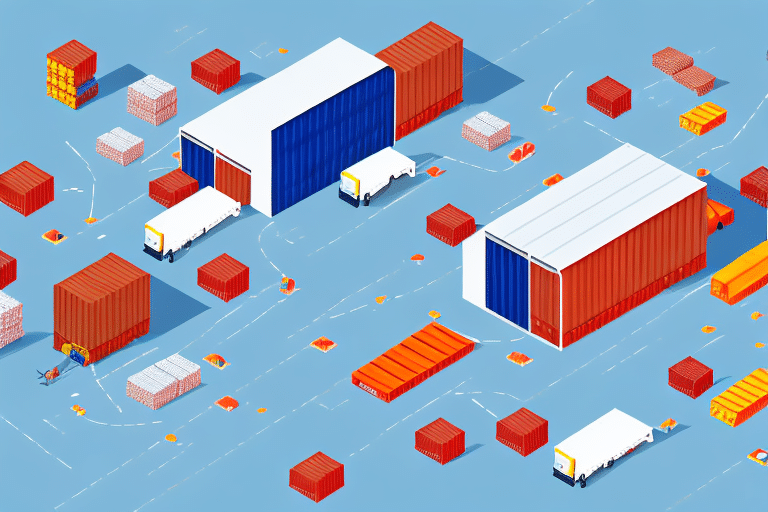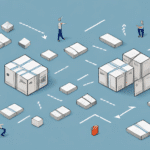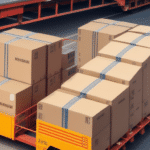Understanding Direct Fulfillment and Third-Party Logistics (3PL)
Direct Fulfillment Third-Party Logistics (3PL) has emerged as a pivotal solution for managing Ecommerce order fulfillment processes. Third-Party Logistics providers specialize in handling logistics and supply chain management functions on behalf of businesses, acting as intermediaries between customers and enterprises. By outsourcing warehousing, inventory management, order processing, and distribution to a 3PL provider, Ecommerce businesses can achieve reduced overhead costs, enhanced logistical efficiency, and greater scalability.
The Role of 3PL in Direct Fulfillment
In the direct fulfillment model, 3PL providers manage the entire order fulfillment process, from receiving orders to delivering products to customers. This comprehensive approach allows businesses to focus on core activities such as marketing, product development, and customer service. By leveraging the expertise and established networks of 3PL providers, Ecommerce businesses can offer faster shipping times and a broader range of products without the burden of managing additional infrastructure.
Benefits of Direct Fulfillment for Ecommerce Businesses
Utilizing direct fulfillment 3PL offers numerous advantages for Ecommerce businesses:
- Cost Savings: Outsourcing fulfillment reduces expenses related to warehousing, packaging, and shipping.
- Scalability: 3PL providers enable businesses to scale operations seamlessly in response to increasing demand.
- Focus on Core Competencies: By delegating logistics, businesses can concentrate on enhancing their products and customer experience.
- Faster Shipping: Access to established shipping networks ensures prompt delivery, enhancing customer satisfaction.
- Expanded Product Offerings: Businesses can offer a wider range of products without worrying about storage and logistics.
The Ecommerce Order Fulfillment Process
An efficient Ecommerce order fulfillment process is essential for ensuring customer satisfaction and operational success. The process encompasses several key components:
Order Processing
Order processing involves receiving, verifying, and managing customer orders. Efficient order processing systems ensure accuracy and timely handling of orders.
Inventory Management
Effective inventory management tracks stock levels, forecasts demand, and optimizes storage space. This ensures that products are available when needed and reduces the risk of overstocking or stockouts.
Picking and Packing
This step involves selecting the ordered products from the warehouse and preparing them for shipment. Proper picking and packing techniques are crucial for minimizing errors and ensuring product safety during transit.
Shipping
Shipping is the final step in the fulfillment process, where orders are dispatched to customers. Partnering with reliable shipping carriers and utilizing advanced tracking systems can enhance delivery efficiency and transparency.
Returns Management
Handling returns efficiently is vital for maintaining customer trust. A streamlined returns management process addresses exchanges, refunds, and product returns promptly and effectively.
Streamlining Operations with Direct Fulfillment 3PL
Direct fulfillment 3PL providers play a significant role in optimizing Ecommerce operations:
Enhanced Operational Efficiency
By managing logistics and supply chain functions, 3PL providers enable businesses to operate more efficiently, reducing the time and resources spent on fulfillment tasks.
Improved Order Accuracy
Advanced order processing systems and experienced staff help minimize errors in order fulfillment, ensuring that customers receive the correct products in a timely manner.
Access to Technology
3PL providers often utilize state-of-the-art warehouse management systems (WMS) and transportation management systems (TMS) that enhance the overall fulfillment process.
Enhancing Customer Satisfaction and Retention
Direct fulfillment 3PL significantly impacts customer satisfaction and retention:
- Reliable Delivery: Consistent and timely shipping builds customer trust and encourages repeat business.
- Order Accuracy: Accurate fulfillment reduces the likelihood of returns and enhances the overall customer experience.
- Effective Communication: Providing customers with real-time order tracking and updates improves transparency and satisfaction.
Data-Driven Insights
3PL providers offer valuable data and analytics on order fulfillment and shipping patterns, enabling businesses to optimize their operations and better meet customer expectations.
Choosing the Right Direct Fulfillment 3PL Partner
Selecting an appropriate 3PL partner is crucial for the success of direct fulfillment strategies. Consider the following best practices:
- Evaluate Expertise: Ensure the provider has experience in your specific industry and understands your unique fulfillment needs.
- Assess Technology: The provider should utilize advanced technology for inventory management, order processing, and shipping.
- Check Scalability: Choose a partner that can scale with your business, accommodating growth and seasonal fluctuations.
- Review Reputation: Look for providers with strong customer reviews and a proven track record of reliability and excellence.
- Conduct Site Visits: If possible, visit the provider’s facilities to assess their operations and infrastructure firsthand.
Future Trends and Challenges in Direct Fulfillment 3PL
The landscape of Ecommerce order fulfillment is continually evolving, presenting both opportunities and challenges:
Emerging Trends
- Automation and Robotics: Increased use of automation in warehouses to enhance efficiency and accuracy.
- Omnichannel Fulfillment: Integrating multiple sales channels to provide a seamless customer experience.
- Sustainability: Growing emphasis on eco-friendly packaging and sustainable logistics practices.
Common Challenges
- Inventory Management: Balancing stock levels to meet demand without overstocking.
- Shipping Delays: Managing and mitigating delays caused by factors beyond the provider’s control.
- Cost Management: Controlling costs while maintaining high levels of service and efficiency.
Overcoming Challenges
Businesses can address these challenges by partnering with adaptable 3PL providers, investing in advanced technologies, and continuously optimizing their fulfillment strategies.
Cost Analysis: Direct Fulfillment 3PL vs In-house Fulfillment
When deciding between direct fulfillment 3PL and in-house fulfillment, conducting a thorough cost analysis is essential:
Direct Fulfillment 3PL Costs
- Outsourcing Fees: Charges for warehousing, inventory management, order processing, and shipping.
- Technology Integration: Costs associated with integrating your systems with the 3PL provider’s technology.
In-house Fulfillment Costs
- Facility Expenses: Costs related to maintaining warehouse space, equipment, and utilities.
- Labor Costs: Expenses for hiring, training, and managing fulfillment staff.
- Operational Costs: Costs associated with inventory management, order processing, and shipping logistics.
Long-term Considerations
While in-house fulfillment may seem cost-effective initially, direct fulfillment 3PL often proves more economical in the long run by reducing overhead costs and providing scalability, allowing businesses to allocate resources more efficiently.
Case Studies: Successful Implementation of Direct Fulfillment 3PL
Numerous Ecommerce businesses have successfully leveraged direct fulfillment 3PL to enhance their operations:
Case Study 1: Company A
Company A partnered with a 3PL provider to streamline its order fulfillment process, resulting in a 30% reduction in shipping times and a 20% decrease in fulfillment costs. Enhanced order accuracy and customer satisfaction contributed to a significant increase in repeat business.
Case Study 2: Company B
By outsourcing fulfillment to a 3PL provider, Company B was able to expand its product offerings without investing in additional warehouse space. This flexibility allowed the company to enter new markets and achieve a 25% growth in sales within the first year.
Conclusion
Direct Fulfillment 3PL offers Ecommerce businesses a strategic advantage in managing their order fulfillment processes. By partnering with a reliable 3PL provider, businesses can achieve cost savings, operational efficiency, and enhanced customer satisfaction. As Ecommerce continues to grow, the role of direct fulfillment 3PL will become increasingly vital, providing businesses with the tools and expertise needed to remain competitive in a dynamic marketplace.






















